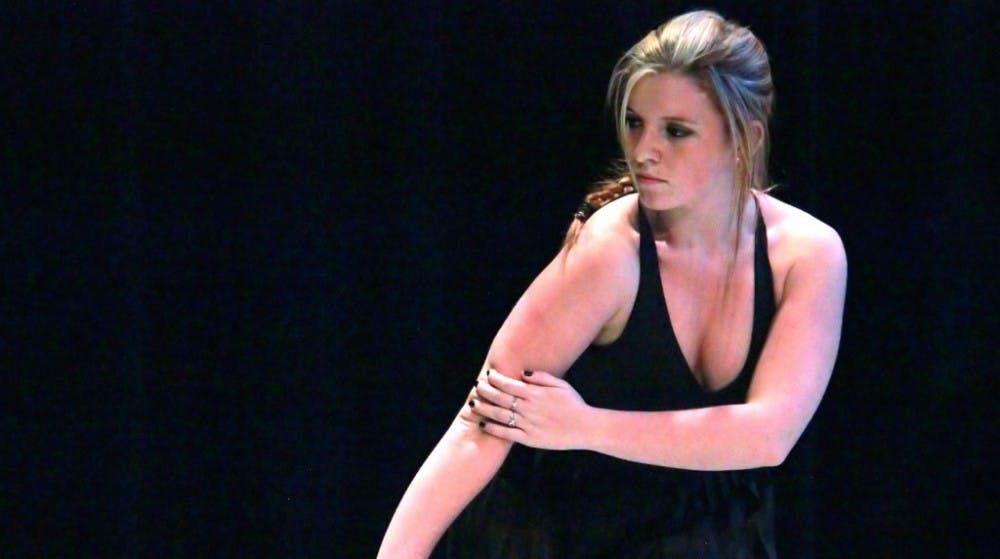Choreography I and II students showcased their choreography projects Oct. 16-17 for small audiences in the Center for the Arts during the fall Choreography Salon. The audience was asked to provide feedback for the students’ works in progress.
All four performances showed several Choreography I and II pieces with duets, solos and group numbers.
Each of the pieces demonstrated geometric patterns in movements and transitions. From angular body shapes to sequences across the floor, each student exemplified a sense of geometric awareness in the choreography.
Even so, each work of choreography was starkly different from the rest. The variety in musical accompaniment, costumes, number of dancers and props fostered a sense of artistic individuality and maturity.
Choreography I student sophomore Allison Dyke, featured two dancers in her piece called “Leagues. And then…” Both dancers, Hallee Bernstein and Lucas Melfi, began the piece by creating angular patterns in the studio space with their bodies without music.
Eventually, violin music joined the dancers and solidified the solemn atmosphere of the piece. In the first part of the piece, Bernstein and Melfi did not come in contact with each other, but they delivered a powerful moment came when they finally interacted, Bernstein lifted Melfi in a powerful moment.
The teamwork between the dancers was apparent as the music changed to a more upbeat tone. The remainder of the piece continued to highlight the athletic abilities of Bernstein and Melfi as they utilized various levels of the space.
Likewise, Choreography II student junior Nicole Ivan showcased five dancers in her piece, “For a Second.” All of the dancers were dressed in tight black clothing and demonstrated powerful movements and formations across the floor.
The dancers in Ivan’s choreography were technically sound, and Ivan truly captured their strengths. Their beautiful lines were highlighted throughout the choreography in their extensions and arm movements.
The percussive nature of the music generated a steady rhythm that complemented the pulsing movements of the dancers.
The dynamic steps were coupled by moments of stillness that created a visually appealing work of artistic merit.
Audience members vocalized constructive criticism after the performances. The interaction between the choreographers and audience members produced intellectually stimulating discussion regarding the choreographic structure and nature of the pieces shown.
The choreographers will spend the rest of the semester developing their pieces and will make adaptions based on the feedback they received.
Overall, the performances were engaging and demonstrated that the choreographic process is most definitely a process that matures over time.


